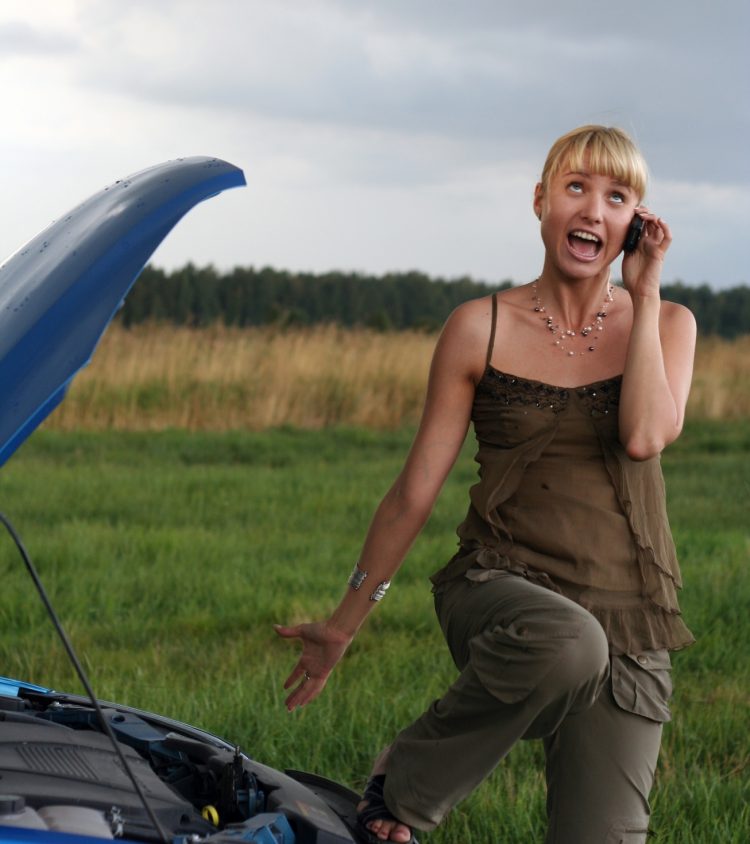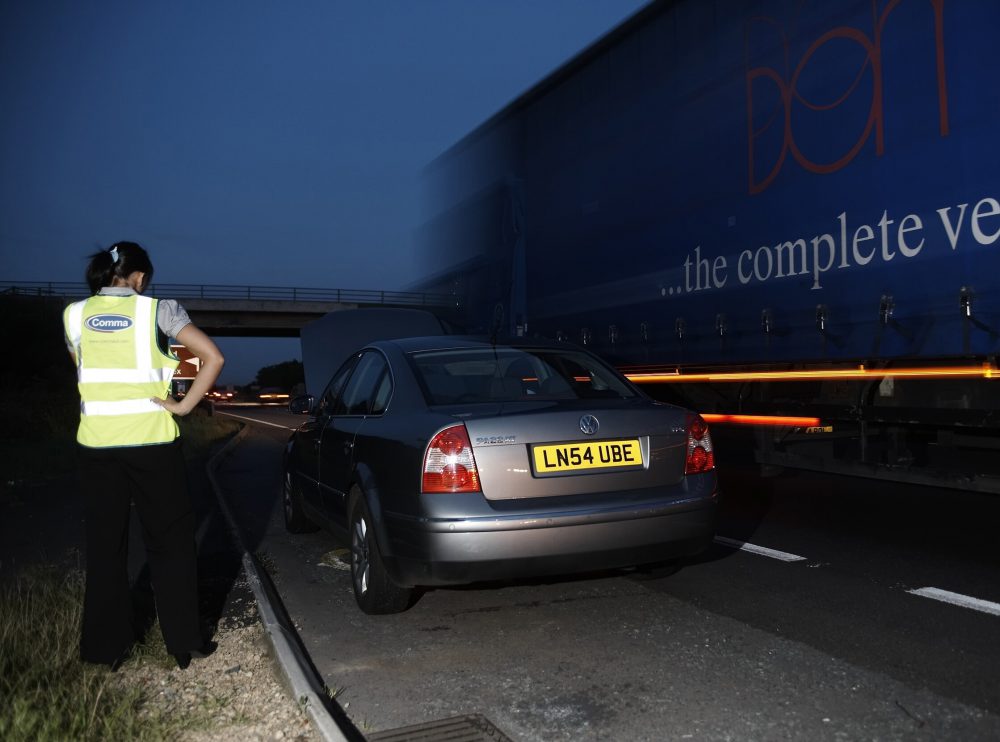
(Picture © Foxy Lady Drivers Club)
Few drivers leave the house expecting their trip to be interrupted by a conked out car. A breakdown normally comes out of the blue and in the middle of a journey, often leaving people stranded at the roadside – a potentially hazardous environment.
So ahead of the summer holiday rush to the road (this year more Brits are expected to opt for a staycation, thanks to the good weather) it’s important that drivers know what to do in the event of a car breaking down and how to take care of themselves and any passengers. Here are my tips for ensuring everyone stays safe until professional assistance arrives.
Safety first
The most important thing when you break down is to remember your personal safety.
The hard shoulder of a motorway can be a dangerous place. You and any passengers must get out of the car as swiftly as possible, exiting through the doors on the left (away from the busy road).
Where possible, gather everyone behind a crash barrier, and make sure you keep any children close by so they can’t wander into harm’s way.
If you’re unable to safely leave your vehicle, or if you can’t get to the hard shoulder, call 999 immediately.
Use your judgement
Even if you break down in an urban environment where cars aren’t moving very quickly the safest thing to do is to get out of your vehicle. However, use your judgement here. If getting out of your car is going to put you at more risk from the people who’re around your car, you might want to stay inside with the doors locked. Breakdown services give priority to drivers who’ve stopped on motorways, have broken down at night or are stuck in areas that given the choice they wouldn’t want to break down in.
Park safely
When recovery vehicles park on the edge of the road to attend a broken down car, the driver turns its wheels hard to the left. The thinking is if any vehicle wanders out of its lane and crashes into it, the recovery van should be pushed into the verge while the vehicle that’s crashed into it will veer away to the right, hopefully missing the conked-out car.
Draw attention to your plight
When your car breaks down, you’re at the mercy of other drivers. Do as much as you can to draw attention to the fact that your car isn’t working. Put the hazard warning lights on and if it’s dark, the side lights. A lot of cars come with a warning triangle in the boot now. Use that on A and B roads assuming it’s safe to do so – and position it a good distance back from the vehicle. However, it is dangerous to do this on a motorway hard shoulder.

(Picture © Comma UK)
Have the right kit
I’m not going to suggest that you have a torch, blanket, rain coat and sturdy shoes in the boot at all times. But it would be great if you did! The reason is they’re likely to make breaking down much more comfortable. In reality the must-haves for your motor are a mobile phone, map, warning triangle, high-visibility vest and the phone and membership numbers of your breakdown service.
No quick fix
Never try to mend the car at the road side yourself, especially on a motorway hard shoulder. Most recovery vehicles won’t attempt to fix a car on a motorway hard shoulder. Instead they’ll tow it to the nearest motorway services or junction and find a quiet, safe place to repair it.
Location, location, location
Once you’ve ensured everyone is safely away from the vehicle, you need to tell your breakdown service where you are. That’s where a map can come in handy on A and B roads.
On motorways there are marker posts and emergency telephones that will get you in touch with the police or your local highways agency – it’s always best to contact them before your breakdown cover provider. Giving the number on the nearest marker post will enable the people in the call centre to pinpoint exactly where you are and which direction you were travelling. They will then be able to arrange for someone to get you going again as quickly as possible.
 Nick Reid is head of automotive technology at Direct Line Group and is also a fellow of the Institute of the Automotive Industry
Nick Reid is head of automotive technology at Direct Line Group and is also a fellow of the Institute of the Automotive Industry
Location is definitely important–thanks for pointing that out! You might call the best roadside service in the world, but if they don’t know where you are it’s not going to matter. That’s a lesson I learned from personal experience. It’s important to always pay attention to where you are when you’re driving (which seems obvious, since you don’t want to get lost). You’ll be safer in the long run.
Not only standing on the far side of the motorway barrier for safety after a breakdown, all occupants should be several metres back up the motorway in case their vehicle is struck by a passing vehicles